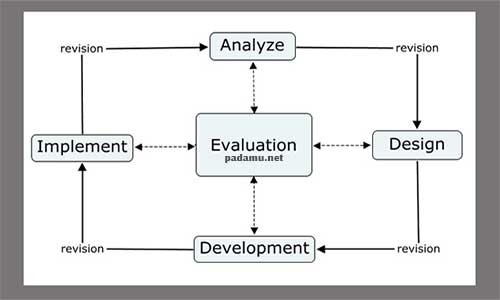Abstract
Research Problems: In futsal games, every player must absolutely master basic passing techniques. However, players often feel bored quickly if the basic passing technique material is not given variations during training so that players do not perform passing techniques properly and correctly. Research Objectives: The purpose of this research is to develop a circuit training-based futsal passing training model and test the effectiveness of developing the circuit training-based futsal passing training model. Methods: The method used is the ADDIE method (analysis, design, development, implementation, and evaluation) with 65 research subjects consisting of 15 Palembang City futsal athletes and 50 Palembang Academy Bigreds futsal athletes. The instrument in this study used a questionnaire. Results: The results of expert validation consisting of three experts, namely 1 futsal academicist, 1 futsal practitioner and 1 futsal coach, obtained a score of 93.3% and the results of the small-scale trial obtained an average score of 94.33%, and the value of the large-scale trial had a score of 93.18%. Conclusion: In this case, it can be concluded that the circuit training-based futsal passing training model that has been developed is already in the very good category and can be applied to improve the ability of futsal athletes in Palembang City.
References
Bahtra, R., Fahrozi, U., & Putra, A. N. (2020). Meningkatkan Volume Oksigen Maksimal (VO2Max) Melalui Latihan Circuit Training Ekstensif. JUARA : Jurnal Olahraga, 5(2), 201–208. https://doi.org/10.33222/juara.v5i2.979
Berdejo-del-Fresno, D. (2014). A Review about Futsal. American Journal of Sports Science and Medicine, 2(3), 70–70. https://doi.org/10.12691/ajssm-2-3-0
Creswell, J. W., & Creswell, J. D. (2018). Research design (5th ed.). Research Defign: Qualitative, Quantitative, and Mixed M Ethods Approaches.
Francis, A. A., & Lohar, N. (2023). Effect of Circuit Training Program on Motor Fitness Components and Skill Abilities of Under - 19 Football Players. International Journal of Science and Research (IJSR), 12(3), 127–133. https://doi.org/10.21275/SR23302210033
Gauthier, M., & Tscholl, P. M. (2020). Futsal. In Injury and Health Risk Management in Sports (pp. 433–437). Springer Berlin Heidelberg. https://doi.org/10.1007/978-3-662-60752-7_66
Hartati, H., Bayu, W. I., & Aryanti, S. (2020). Effect of 8-Week Circuit Weight Training on Strength. Proceedings of the 4th International Conference on Sport Science, Health, and Physical Education (ICSSHPE 2019), 27–29. https://doi.org/10.2991/ahsr.k.200214.008
Iswahyudi, N., Fajar, M. K., Sugeng, I., & Derana, G. T. (2020). Latihan Circuit Training Terhadap Peningkatan Daya Tahan Aerobik (Vo2 Max). Altius: Jurnal Ilmu Olahraga Dan Kesehatan, 9(2), 61–69. https://doi.org/10.36706/altius.v9i2.12862
Kurniawan, D. I., Gery, M. I., & Sitompul, S. R. (2024). Pengaruh circuit training terhadap peningkatan daya tahan aerobik peserta ekstrakurikuler futsal. JOURNAL SPORTINDO, 3(1), 14. https://doi.org/10.24853/jsi.3.1.14-20
Muarif, M., Nazurty, & palmizal. (2021). Pengembangan Media Audio Visual Latihan Passing dalam Permainan Futsal. Jurnal Cerdas Sifa Pendidikan, 10, 16–23. https://doi.org/10.22437/csp.v10i1.11895
Mubarokah, N. (2017). Pengaruh Circuit Training Terhadap Peningkatan Daya Tahan Otot Tungkai Dan Kelincahan Pada Pemain Futsal Beka United Futsal Academy. Pendidikan Jasmani Indonesia, 33(2), 45.
Rahman, F. J. (2018). Peningkatan Daya Tahan, Kelincahan, dan Kecepatan pada Pemain Futsal: Studi Eksperimen Metode Circuit Training. Jurnal SPORTIF : Jurnal Penelitian Pembelajaran, 4(2), 264. https://doi.org/10.29407/js_unpgri.v4i2.12466
Rizal, A. Y. C., Sugiyanto, S., & Sabarini, S. S. (2020). Passing training model based on small side game in futsal sports for senior high school students. Quality in Sport, 6(2), 47–55. https://doi.org/10.12775/QS.2020.011
Robiansyah, M. F., & Amiq, F. (2018). Pengembangan Model Latihan (Circuit Training) Dalam Permainan Futsal. Prosiding Seminar Nasional IPTEK Olahraga 2018.
Romadhoni, D. L., Herawati, I., & Pristianto, A. (2018). Pengaruh Pemberian Circuit Training Terhadap Peningkatan Vo2Max Pada Pemain Futsal Di Maleo Futsal Magetan. Jurnal Kesehatan, 11(1), 43–48. https://doi.org/10.23917/jk.v11i1.7004
Syafaruddin, S. (2019). Tinjauan Olahraga Futsal. Altius : Jurnal Ilmu Olahraga Dan Kesehatan, 7(2). https://doi.org/10.36706/altius.v7i2.8108
Trindade, D. dos S., Freire, G. R. G. L., Santos, L. Q. dos, Borba, L. de O., Lima, L. G. de, Prado, M. S. do, Carlesso, P. H., Osório, R. S. E., Brasil, R. da R., & Cruz, T. D. (2025). Circuito anaeróbico como método de treinamento físico para atletas de futsal. Revista Ft, 29(142), 29–30. https://doi.org/10.69849/revistaft/ni10202501142029
Yanto, A. H., & Rasyono, R. (2022). Pengembangan model latihan passing berbasis teamwork untuk atlet futsal. Altius: Jurnal Ilmu Olahraga Dan Kesehatan, 11(2), 144–151. https://doi.org/10.36706/altius.v11i2.18480
Zainuddin, M. S. (2024). Inovasi Latihan Rondo: Meningkatkan Kemampuan Passing Tim Futsal. Indonesian Journal of Physical Activity, 4(1), 57–64. https://doi.org/10.59734/ijpa.v4i1.59
Zhai, Y., & Qin, G. (2024). A comparative study of 8-week complex training and resistance training on athletic performance of amateur futsal players. Frontiers in Physiology, 15. https://doi.org/10.3389/fphys.2024.1360440

This work is licensed under a Creative Commons Attribution-ShareAlike 4.0 International License.
Copyright (c) 2025 Dahliana Dahliana, M. Haris Satria, Bayu Hardiyono, Selvi Atesya Kesumawati (Author)






